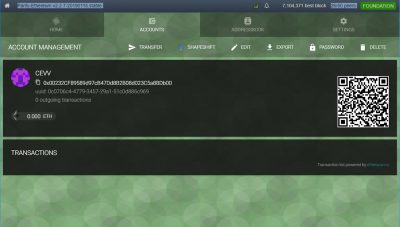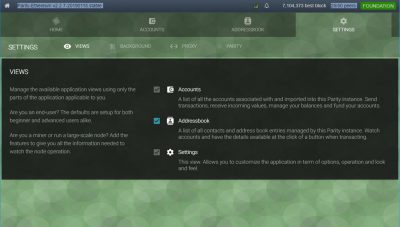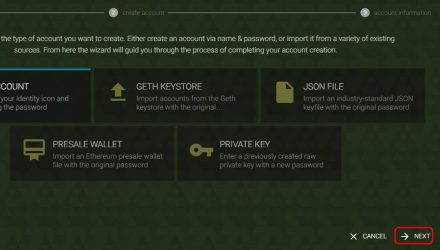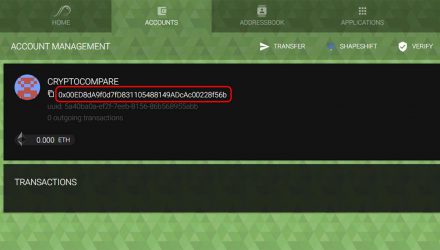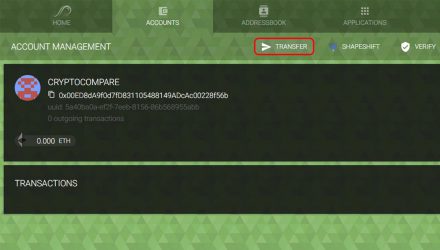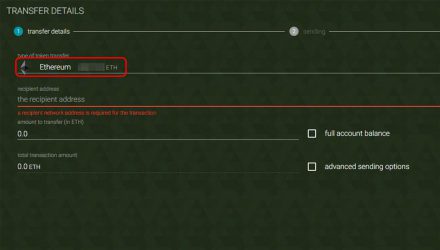
Open Source
High-Performance
Supports Hardware and Software Wallets
Full Node Wallet
Not Hierarchical Deterministic (HD)
Small Footprint – Harder to Detect and Track Online
No Two-Factor Authentication
Parity Wallet: Comprehensive Review and Guide
This desktop wallet works with Ethereum and ERC20 tokens. Parity is also a dApp browser, developed by the team for specific results like high-performance, verifiability, low-footprint, and modularization. Every new invention and action related to that tool is based on the newest Peer-to-Peer technology. The used architectures are evolving into state-of-the-art applications. Read on this review of Parity Wallet and see everything from the features it offers to the step-by-step installation and usage guide.
01.Parity Features & Fees
Integrated directly into your browser, this Ethereum client allows access to the basic Ether and token functions. Parity wallet is an ETH GUI browser that provides access to all the features of the network. This in combination with the full node characteristics lets you store the whole blockchain on your Ubuntu, OSX or Windows operated computer. You have it all just one click away.
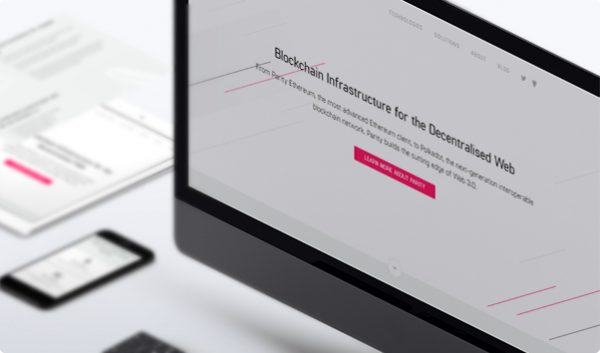
Pros & Cons
This section will reveal top characteristics of the Parity wallet, divided into useful and not so helpful ones. They are all explained with few words, so you can get a better idea of what will work for you and what not. Have a look.
- Fast Sync Doesn’t need to locally download the blockchain. Request info from full nodes.
- Easy to Use The instructions on the dashboard are quite easy, explanatory, basically everything you need
- High Level of Experience Some of the Parity developers took part into the ETH establishment
- No Two-Factor Authentication No extra layer of protection
- No Hierarchical Deterministic Use seed phrases a.k.a. long passwords to find your keys
Are You Interested in the Parity Wallet?
or
Read More on Multi-Coin Support and OS Compatibility
Multi-Coin Support and Operating System Compatibility
Parity is a wallet, dealing with numerous ERC-20 tokens and ETH coins. This is a plus, because the first altcoin has a very strong and safe network. In the table below, you can find the top representatives with the option to expand into a full list.
The Parity wallet is compatible with the most common operating systems and in addition – with the e-commerce app platform Docker. Depending on your goals, you could opt for running either a full node or a light node of this wallet. The requirements are the following:
- Full Node – Multi-Core CPU, 4GB of RAM memory and an SSD with 140GB+ of space
- Light Node – Single-Core CPU, 512MB RAM and 100MB of free disk space
-
WindowsWindows
64-bit OS
-
Mac OSMac OS
64-bit OS
-
LinuxLinux
64-bit OS
Built-In Exchange

This convenient inbuilt exchange is reachable from the tab ‘Accounts’ in your Parity wallet. Choose an account to manage and press the Shapeshift button. This action will lead you to a menu with options for exchanging the desired coins. Have in mind that this useful widget applies fees, demanded by the related exchange.
Is Parity Safe?
Security
Parity experienced a security breach in 2017. This led to trust concerns among the users. Nevertheless, the development team took prompt actions to tone down the damages. An interesting approach was the group of hackers hired by Parity wallet, to retrieve as much as possible from the stolen coins.
Rust Programming Language
It uses actor-based modality, which guarantees safety. Rust also has unit testing and peer review. This way the system is sturdy and resilient. The extra levels of flexibility are provided from native speed contracts, JSON-based chain specification format and modular architecture.
Privacy and Anonymity
With this wallet, you leave tiny tracks from any transaction done in the network. This way your data stays highly private and anonymous. Here is how:
Higher Levels of Security
This helps Parity be harder to detect and track online. The small footprint creates smaller storage, easier to manage but harder to detect and provides a higher level of cache management
Is Parity The Wallet For You?
Download HereTransaction Fees
This is something positive for the Parity wallet, it doesn’t charge. The transactions related to the ETH network are, but they vary and nothing exact can be pointed. Basically, fees are paid to the miners for processing every transaction and projecting it on the blockchain. Higher amounts will lead to faster actions.
Conclusion
This review of the Parity wallet shows that it is preferred desktop wallet for Ethereum and ERC-20 tokens. The interface allows beginners as well as more advanced users to take advantage of the private and safe transactions. This wallet has a small footprint and inbuild exchange for convenience and flexibility. The technology behind Parity is quite outstanding too. They have managed to mitigate the damages after the hack attack and there were none since then. The security and safety measures used have been indeed effective.
For those of you fond of the fee control, while using a wallet, a good ETH representative is the Mist. It is an officially supported by the Ethereum blockchain wallet with a build-in exchange. It offers adjustable Gas fees and the speed of the transactions is more or less in your hands.
02.Parity Wallet Guide: How to Setup and Use

How to Install
Before you learn how to use the Parity wallet, you first need to install it. I have separated the different OS options for ease of use. Have a look and follow the steps
Choose Operating System
- Download Parity ETH from the wallet’s website
- Stable is recommended out if the three options – Stable, Beta and Nightly
- Choose the file for Windows, download and install
As a full node, Parity requires a bit larger storage space. Due to that scale of the information, synchronization takes some time
- Download Parity from the website
- Out if the three options – Stable, Beta and Nightly, Stable is recommended
- Choose the file for Mac OS, download and install
Parity requires a larger storage space for the information and the synchronization takes a bit longer
- Download Parity ETH
- It is always better to choose Stable instead of Beta and Nightly
- When downloaded, run the Linux installer
Parity requires space and time for synchronization, because it is a full node wallet
Create an Address
To start with the creation of a new address, go to ‘Accounts’ and click on ‘+Accounts’. There you will be presented with several options to choose from. You can also import some from the Geth KeyStore folder, a JSON file private key or whichever fits best and click ‘Next’. Then simply follow the instructions.
Send and Receive Assets
These two actions are easily executed. For sending ETH or tokens from the Parity desktop wallet, go to ‘transfer’. Select which of the assets you want to send. Choose a recipient from the address book or paste the desired one directly. Then figure out the amount, click ‘send’, enter the password and confirm the requested action.
Receiving is even easier, just open ‘accounts’, pick an address from there or simply send the one you want to the sender.
Hint: always check the addresses several times. The actions in the crypto world are irreversible.
Backup and Restore
Backup
Navigate to the Parity folder
The wallet’s folder is usually hidden and stored at C:\Users\<YOUR USER>\.parity. In case you can’t locate it, enable viewing of hidden files. In the ‘keys’ document, you will see the list with a single file for each ETH account. These KeyStore files are the safe encrypted version of the private keys. Use them with a password to restore the Parity.
Backup the account files, 12-word mnemonic phrase
In case intruders get to your KeyStore files, they will know only your account address. This is thanks to the additional 12-word mnemonic phrase, enabling an additional Parity backup. You must write it down somewhere safe, because it is generated only once after account creation. Its only protection is offline cold storage away from intruders.
Specific Functions
Parity is a perfect gadget for developers and advanced users. A good reason for that is the lightweight and multifunctional character of the wallet. It comes with inbuilt decentralized applications like Method registry, Web 2.0 browser, Token deployment and registry, Registry, Web3 console plus TX-Queue viewer.
Possible Issues and How to Avoid Them
There might be some user interface mismatches between the versions, or even not working at all (like when visiting 127.0.0.1:8180). This is usually caused by separation between the UI and Parity Ethereum client (like with v1.10). With v2.0 the browser UI has been disabled by default and totally removed. It is reachable only through an application called Parity UI. In case you want to use the browser UI, launch Parity ETH with the flag –force-ui and visit 127.0.0.1:8180 in your favorite browser.
03.FAQ
-
How can I mine with my Parity wallet?
This wallet supports standard Ethereum JSON-RPC interface for mining (eth_getWork, eth_submitWork methods). This makes it compatible with every miner implementing ETH PoW. For starters, get a Parity Ethereum node up and running. Then install the preferred miner.
04. About Parity
Parity is the perfect tool for those of you trying to develop smart contracts, an ICO or even an ETH-based e-commerce market product or a platform. Don’t get me wrong, this wallet welcomes users ready to hire a team of engineers wanting the same things, plus wishing to get in business with corporations, banks and tech companies. The people behind this desktop tool will provide the documentation, safety, and transparency those organizations require. Don’t hesitate to create or design next generation e-commerce solutions using Parity.

